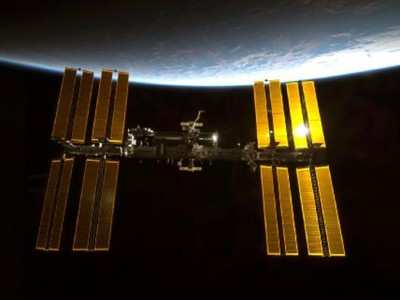Fri, Jul 16, 2010
NASA Picks Nine Experiments In Program's Inaugural Year
 NASA has selected nine experiments, designed by students at
seven schools, for astronauts to perform on the International Space
Station this summer. NASA selected the proposals from among 132
received for the new Kids in Micro-g! Program.
NASA has selected nine experiments, designed by students at
seven schools, for astronauts to perform on the International Space
Station this summer. NASA selected the proposals from among 132
received for the new Kids in Micro-g! Program.
This is the pilot year for the program, a student experiment
design challenge geared toward grades five through eight. Its
purpose is to give students a hands-on opportunity to design
experiments or simple demonstrations for testing both in the
classroom and in the station's microgravity environment. The
winners were chosen by a team of representatives from NASA's 10
field centers.
"What a wonderful experience for these kids to have their
experiments carried out in space and by astronauts," said Mark
Severance, International Space Station National Laboratory
Education projects manager at NASA's Johnson Space Center in
Houston. "This gives students the chance to see what happens
differently, other than in the classroom, when their experiment is
performed in an environment that is not on Earth."
The schools chosen to participate are:
- National Winner and NASA Glenn Research Center Regional Winner
Brownell Middle, Grosse Point Farms, MI.
- National Runner-up and NASA Kennedy Space Center Regional
Winner Vaughan Elementary, Powder Springs, GA.
- NASA Ames Research Center Regional Winner Hamlin School, San
Francisco, CA.
- NASA Goddard Space Flight Center Regional Winners (tie) East
Hartford-Glastonbury Magnet, East Hartford, CT and Carl Sandburg
Middle, Old Bridge, NJ.
- NASA Kennedy Space Center Regional Winner Windy Ridge
Elementary, Orlando, FL.
- NASA Langley Research Center Regional Winner Virginia Academy,
Ashburn, VA.

The experiments will study the effect of weightlessness on
various subjects such as humans and liquids and other materials, as
well as what the environment reveals about the laws of physics. The
experiments are expected to have observably different results in
microgravity than when performed in the classroom.
The apparatus for the experiments was constructed using the same
materials as a tool kit previously provided to astronauts on the
space station. The materials in the tool kit are commonly found in
the classroom and used for science demonstrations. The proposed
experiments or demonstrations are required to take no more than 30
minutes to set up, run and take down.
This fall, the program will ask for proposals for 2011.
More News
He Attempted To Restart The Engine Three Times. On The Third Restart Attempt, He Noticed That Flames Were Coming Out From The Right Wing Near The Fuel Cap Analysis: The pilot repor>[...]
Make Sure You NEVER Miss A New Story From Aero-News Network Do you ever feel like you never see posts from a certain person or page on Facebook or Instagram? Here’s how you c>[...]
From 2009 (YouTube Edition): Leading Air Show Performers Give Their Best Advice for Newcomers On December 6th through December 9th, the Paris Las Vegas Hotel hosted over 1,500 air >[...]
Aero Linx: NASA ASRS ASRS captures confidential reports, analyzes the resulting aviation safety data, and disseminates vital information to the aviation community. The ASRS is an i>[...]
“For our inaugural Pylon Racing Seminar in Roswell, we were thrilled to certify 60 pilots across our six closed-course pylon race classes. Not only did this year’s PRS >[...]
 NTSB Final Report: Rutan Long-EZ
NTSB Final Report: Rutan Long-EZ ANN FAQ: Turn On Post Notifications
ANN FAQ: Turn On Post Notifications Classic Aero-TV: ICAS Perspectives - Advice for New Air Show Performers
Classic Aero-TV: ICAS Perspectives - Advice for New Air Show Performers ANN's Daily Aero-Linx (06.28.25)
ANN's Daily Aero-Linx (06.28.25) Aero-News: Quote of the Day (06.28.25)
Aero-News: Quote of the Day (06.28.25)




